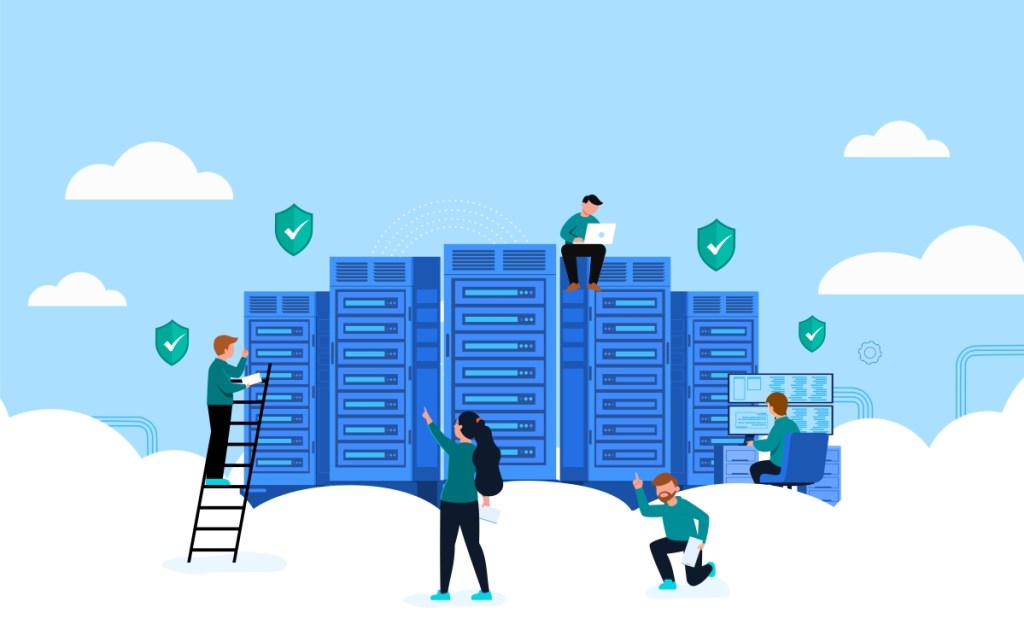5 data protection solutions in Google Cloud
Syah Ismail2021-07-14T04:58:06+08:00
Google Cloud Storage was architected to address two common administrator needs – for multi-region storage and for performant, low-latency cold storage – and to ensure conventional Recovery Time Objective (RTO), Recovery Point Objective (RPO) and compliance requirements can easily be met. All of this facilitates a team-wide adoption of cloud storage for backup use cases.
Google Cloud also have a number of offerings to allow customers to architect a data protection strategy that meets their compliance and operational requirements. For backup and storage administrators engaged in the team effort of cloud migration, here are five data protection solutions in Google Cloud.
1. Persistent Disk Snapshots
Google Cloud provides Persistent Disk snapshots for workloads running on Compute Engine or Google Kubernetes Engine. Persistent Disk snapshots are an easy way of taking a regular crash-consistent backup with predictable RTO and RPO performance akin to warm on-premises backup storage. Compute Engine snapshots are incremental-forever and priced based on storage size.
Persistent Disk snapshots are also stored in multi-region storage by default at no additional cost with the option to restore to any Google Cloud region contained within.
For customers that demand very low RTO, one option is to make certain snapshots available locally in the preferred recovery region. This trades some of the resiliency associated with multi-region storage in favour of faster restore performance in the single preferred recovery region as well as easier compliance with data sovereignty requirements.
Persistent Disk snapshots can be orchestrated via the Google Cloud Console, Google API, or Google CLI. Additionally, you can create a snapshot schedule to automate regular snapshots at hourly, daily or weekly intervals with custom retention policies. For additional protection against downtime, customers can choose to architect their production applications for high availability using regional Persistent Disk.
2. Google’s Cloud SQL
For customers using Cloud SQL, Google’s managed database service, Google Cloud offers two options for data protection. The first is fully automated, application-consistent and incremental-forever backup, along with point-in-time recovery. These automated backups are turned on by default with a retention period of seven days.
The second option is for on-demand backups. This allows an administrator to take a separate full backup with a different retention period from any automated backups.
Both options are stored in multiple Google Cloud regions to ensure a redundant backup copy is preserved. Just like Persistent Disk snapshots, these Cloud SQL backups can be restored either in the same region as the production database or in the secondary region. You also have the option to restrict the location of your backups to a specific region to meet data residency or other compliance requirements.
3. Actifio GO and Google Cloud Data Protection
For organisations interested in a first-party backup solution that backs data up to Cloud Storage, Actifio GO is available on Google Cloud. Actifio GO can be configured to protect your in-cloud applications running on Compute Engine and Google Cloud VMware Engine including popular ‘lift and shift’ enterprise databases such as Oracle and SAP HANA. Administrators that use Actifio GO will be able to provide incremental-forever, application-consistent backup while orchestrating and automating their in-cloud backups via one centralised console. They will also be able to select from a range of storage options including Persistent Disk for fast snapshot restores, Cloud Storage buckets in multiple regions for compliance purposes and low-cost, performant cold storage for long-term archival.
Additionally, Actifio GO can be deployed as a hybrid, SaaS backup solution. This architecture backs up on-premises VMs and databases to a snapshot pool locally, migrating backups to Cloud Storage for longer-term retention. That enables lower-cost business continuity by allowing administrators to restore those backups inside Google Cloud in case of a disaster. For storage professionals asked to retire secondary data centres or on-premises secondary storage, Actifio GO can be a more direct route to the cloud.
4. Using Google Cloud Storage with Google partner backup solutions
During the first stages of cloud migration, some organisations may prioritise secondary workloads, such as backup or disaster recovery copies. These workloads make ideal candidates for low-friction cloud adoption, as they can be migrated from on-premises to cloud storage without impacting production applications.
Many storage and backup administrators are already aware of how backup and recovery companies enable tiering cold backups to Cloud Storage. Administrators that use one of Google’s backup and recovery partners, like Commvault, can take advantage of Google’s multi-region and performant cold storage to meet key compliance requirements like retaining an off-site backup copy for auditors or preserving a backup copy in multiple geographic regions. Recently, partners like Veeam have enhanced their support for Google Cloud workloads and for Cloud Storage as an archival target.
Storage administrators may also be interested in backup and data migration options from established enterprise vendors like NetApp and Dell. These vendors have partnered with Google Cloud to create simple cloud solutions for storage administrators that know their products well.
5. Export archival data to Google’s Cloud Storage
Storage administrators accustomed to on-premises workloads understand that there is a range of options, beyond full-fledged backup, to preserve additional copies of their data for compliance purposes. Google Cloud also enables you to perform backup exports, either exporting Persistent Disk data as a custom image or alternately, exporting a Cloud SQL database as a CSV.
These exported images and CSVs can be moved to Cloud Storage to be shared across projects or to be archived at a low cost. Just as it is possible to export this data to object storage, it is also possible to import it and recreate a VM or database.
Google Cloud has developed a number of data protection offerings to help administrators excel in their role and meet operational and compliance requirements. Underpinning each of these is a cloud storage architecture designed to make it easier and cheaper to store backup data in multiple regions and built to provide great price-to-performance for long-term data retention.




